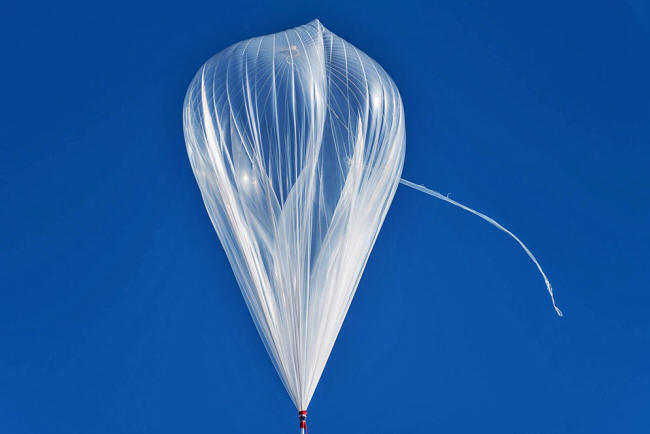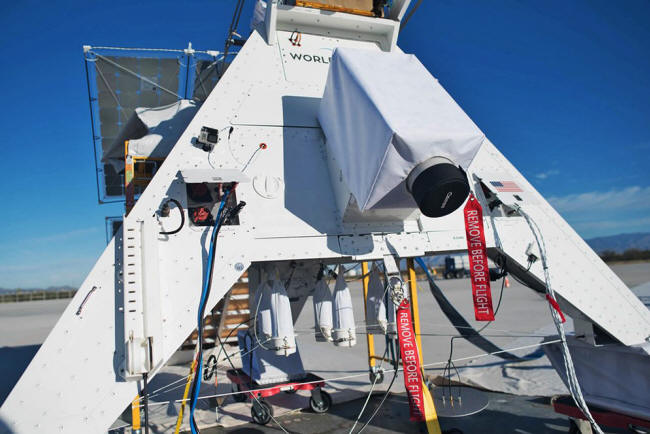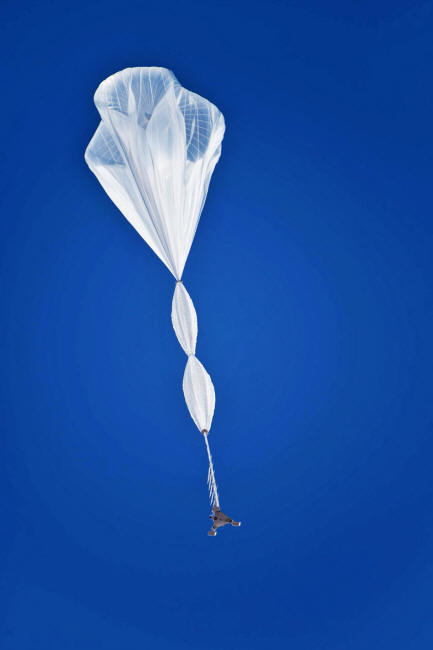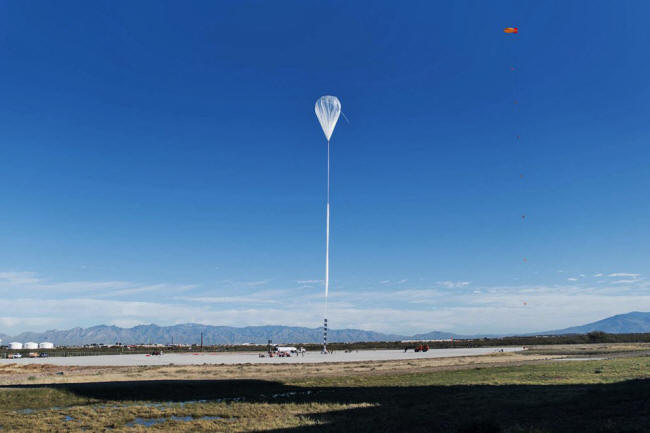|
-
carries World View's stratollite grows to the size of a football field by the time it reaches the upper atmosphere. Photograph: Daniel Oberhaus
Nearby, a white metal
tripod the size of a smart car is tethered to two dozen solar panels
and hundreds of feet of clear plastic that stretches across the pad.
It's a finely honed surveillance device outfitted with a suite of sensors and a camera sensitive enough to detect people standing on the ground from the edge of space.
The stratollite travels by virtue of two balloons, one filled with helium to provide lift, and the other with pressurized air, which functions as a steering system.
By the time the
contraption reaches peak altitude about 14 miles above sea level,
the helium balloon will have grown large enough to comfortably
encompass a football field. But in its deflated state, the expanse
of plastic brings to mind the sloughed-off skin of the rattlesnakes
that call the surrounding Arizona desert home.
Things are looking good:
You could hardly ask for better conditions to launch the thousand-pound stratollite on a month-and-a-half sojourn at the edge of space.
Mission control gives the
green light to start inflation, a process that takes just a few
minutes but uses enough helium to fill more than one million party
balloons.
A technician jogs across the pad, pulls the pin anchoring the stratollite, and sidesteps the craft as it gracefully begins its journey to the edge of space.
A white balloon launch base
with red warning tags on a tarmac. is capable of seeing a person on the ground from 75,000 feet in the air. Photograph: Daniel Oberhaus
A condenser in the stratollite sucks in the sparse air in the upper atmosphere and pumps it into the second, "superpressure" balloon attached beneath the helium balloon.
The pressurized air is denser than the helium, so the superpressure balloon acts as a weight.
Because the stratollite is at the mercy of the wind, the ability to change altitude at will is critical for navigation.
Winds move in different
directions and at different speeds depending on the altitude, so
stratollite's minders can steer it by drifting up or down. On any
given day, the altitude of the stratollite might change by as much
as 25,000 feet depending on the wind patterns.
Given that only a handful of people have piloted stratospheric balloons and lived to tell the tale, it was an ambitious goal - but the company had the technical chops to back it up.
In 2014, MacCallum and
Poynter worked together on a mission to send Google executive
Alan Eustace on a record-breaking space-diving journey to
136,000 feet suspended beneath a stratospheric balloon.
The idea is to use
long-lasting stratospheric balloons to collect high-resolution
images of Earth and sell this data to the government and private
companies.
He says World View aims to fill a niche that can't be met by more conventional technologies like drones and satellites, which involve compromises in the quality of images, the area these images cover, and the frequency with which images are collected.
Stratospheric balloons promise cheap access to incredibly high-resolution images that can be collected anywhere on Earth.
Using off-the-shelf imaging hardware, World View can take photos with 15-centimeter resolution from 75,000 feet (23,000 meters), and its custom-made cameras will soon be capable of 5 centimeters.
translucent
balloon floats to the sky under the helium balloon remains deflated until the stratollite reaches its maximum altitude and is then rapidly pressurized with air.
Photograph: Daniel Oberhaus
Unsurprisingly, perhaps, World View has attracted the interest of the US Department of Defense, which Hartman says will be one of the company's first customers when it starts selling its data next year (2020).
He says the company has
also received a lot of attention from the energy sector, which is
interested in using the image data to monitor its oil and gas wells,
transmission lines, and other critical assets.
For example, he says the company isn't going to let clients just,
Instead, Hartman says he'd prefer to hear from customers who are interested in atmospheric research or climate science, which he sees as one of the stratollite's most promising applications.
World View collects reams
of atmospheric data each flight, which the company is using to build
what Hartman claims will be the most accurate model of stratospheric
winds in existence.
The company is also
working on other data-gathering devices like synthetic aperture
radar, which can create 3D images of objects on the surface.
World View's December launch marks the first time the company has had more than one balloon in the air at a time, if only for a few days.
By the time you're reading this, its other stratollite will have returned to the surface under a steerable parachute after nearly seven weeks in the stratosphere.
attached to a tether floats upward to the sky
with
mountains in the background the edge of space, it will be nearly wide enough to fill the frame of this photo. Photograph: Daniel Oberhaus
In 2016, Rema Matevosyan, an applied mathematician, cofounded Near Space Labs, which also collects high-resolution imagery from the upper stratosphere.
The company has recently started testing its six-legged observation platforms, known as Swifts, on high altitude flights over Austin and Philadelphia.
The Swifts are smaller and lighter than World View's stratollites and so far have only spent a few days at altitude, a limitation imposed by their batteries.
Each Swift is outfitted with a steerable imaging device capable of 30 centimeter resolution, but Matevosyan says the company's next-generation cameras will take images with 10-centimeter resolution.
Both World View and Near Space Labs are banking on the world's insatiable appetite for data to keep their companies aloft.
But given their new spin
on high altitude surveillance, neither can be sure just how big the
market is - or what their balloon platforms might be used for
next...
|





